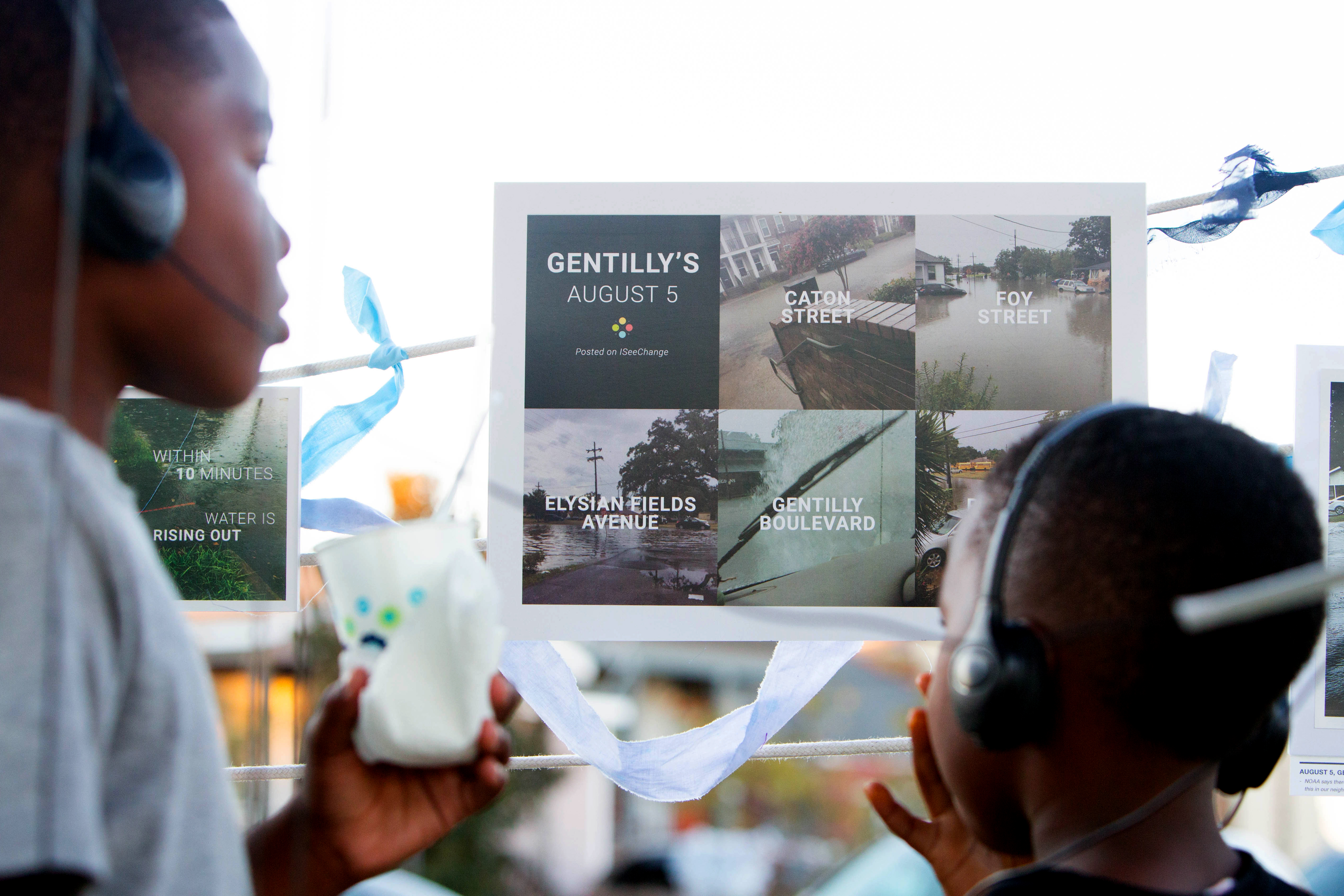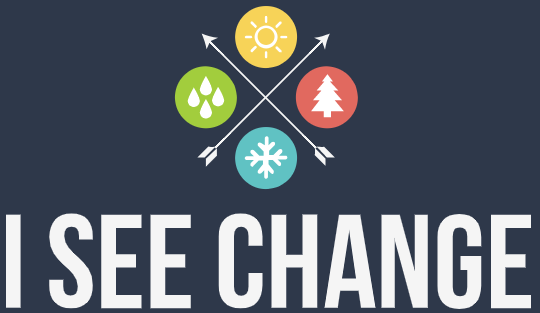By Julia Kumari Drapkin, CEO and founder, ISeeChange

The word “empowerment” is a loaded bit of language. For years, I’ve used this word to describe the tools, platforms, and methods we’ve developed at ISeeChange to “empower” communities in adaptation and decision-making. The science community liberally uses the word too: “empowering society through science,” “empowering women in science,” or “empowering communities with science.”
“Empower,” literally means to give power, and infers that those “receiving” power lack it. Yet communities, women, society—these collective and individual voices are inherently powerful; in more ways than one, they add just as much “power” to science and data, if not more. Lasting impacts are achieved by channeling the natural power of community voices in combination with data, not with scientific data alone.
That’s why we created ISeeChange to bring the power of both together. Our collaborative storytelling and data collection platform mobilizes residents and community groups together with scientists, journalists, and civic decision-makers to co-investigate the local impacts of climate change.
ISeeChange’s first pilot focused on urban heat using sensors alongside stories about daily life without air-conditioning in Harlem, particularly in public housing. In partnership with residents hosting sensors, we proved that indoor heat waves behaved very differently than outdoor heat waves, suggesting a significant reconsideration of how heat advisories get issued and adaptation efforts in low-income urban communities.
Just this summer we published our paper alongside our partners, WE ACT for Environmental Justice, public media and climate journalists, and scientists from City University of New York in the Bulletin of the American Meteorological Society. But it wasn’t our paper that resulted in policy changes or impact in New York City, it was the community voices of the residents impacted by heat waves. By reporting community stories and our results in real time with our media partners, city officials acknowledged that their cooling center practices weren’t well marked and our award-winning series sparked dialogues about unfair air conditioning policies in public housing and the need for better neighbor-to-neighbor networks.

Still the project failed in one glaring way that ISeeChange has spent the last two years focused on: when we tried to gather our sensor hosts together to discuss what kinds of adaptation they wanted to see happen in their community, only a fraction of the residents who participated could come. That’s when our team realized that civic participation—the act of using one’s naturally powerful voice—is truly a luxury of time and resources.
The people most impacted by climate change—low-income communities, the elderly with health or mobility concerns, and the parents of young children—are not going show up for four-hour workshops on Saturdays. Yet from City Council meetings to infrastructure design meetings, this is how traditional community engagement gets done. ISeeChange knew we could do better and, in partnership with residents, community-based organizations, and volunteer scientists from the Thriving Earth Exchange, we are.
In 2017 we developed a new community-sourced urban flood monitoring effort in the Gentilly Resilience District in New Orleans, where 120 million dollars in HUD-funded green infrastructure projects are creating a testing ground for innovation in both equitable community engagement and green infrastructure design. Using the ISeeChange mobile tools as well as creative outreach methods in the neighborhood, we asked residents how they were being impacted by weather extremes. Right away, we started receiving early reports of flooding, several months before the city experienced record-breaking storms and flooding. Working with both residents and local hydrologists, we developed a community-sourced flood monitoring method that painted an ever-more detailed portrait of risk and resilience at the neighborhood level.

Since then, ISeeChange data, stories, and photos have helped groundtruth models and been incorporated into design proposal requests for resilience projects. We are now working with the New Orleans Department of Emergency Management and Disaster Preparedness to expand the community flood monitoring city-wide, as well with engineering and design firms to add details to models and more equitably bring community voices into the infrastructure design process. Residents can participate anytime, anywhere, and tell us in real-time what matters to them.
We’re thrilled to continue our work with the Thriving Earth Exchange and extend our platform to its community partners, mobilizing and amplifying powerful community voices alongside quantitative data. ISeeChange digital tools and engagement methods we developed in both our urban flooding and urban heat projects can be used anywhere across the country and the globe. We’re also planting the seeds for new hyper-local investigations around drought and wildfire risk.
From New Orleans to Kenya to Kerala, ISeeChange’s global community documents local change and helps connect the dots to bigger picture trends that unite us all. We are seeding an international neighbor-to-neighbor movement that empowers communities to connect, co-design, and evaluate climate solutions together. Together we can see change and make one.
Harlem Heat Poster (AGU FM 2018)
New Orleans Flooding Poster (AGU FM 2018)

